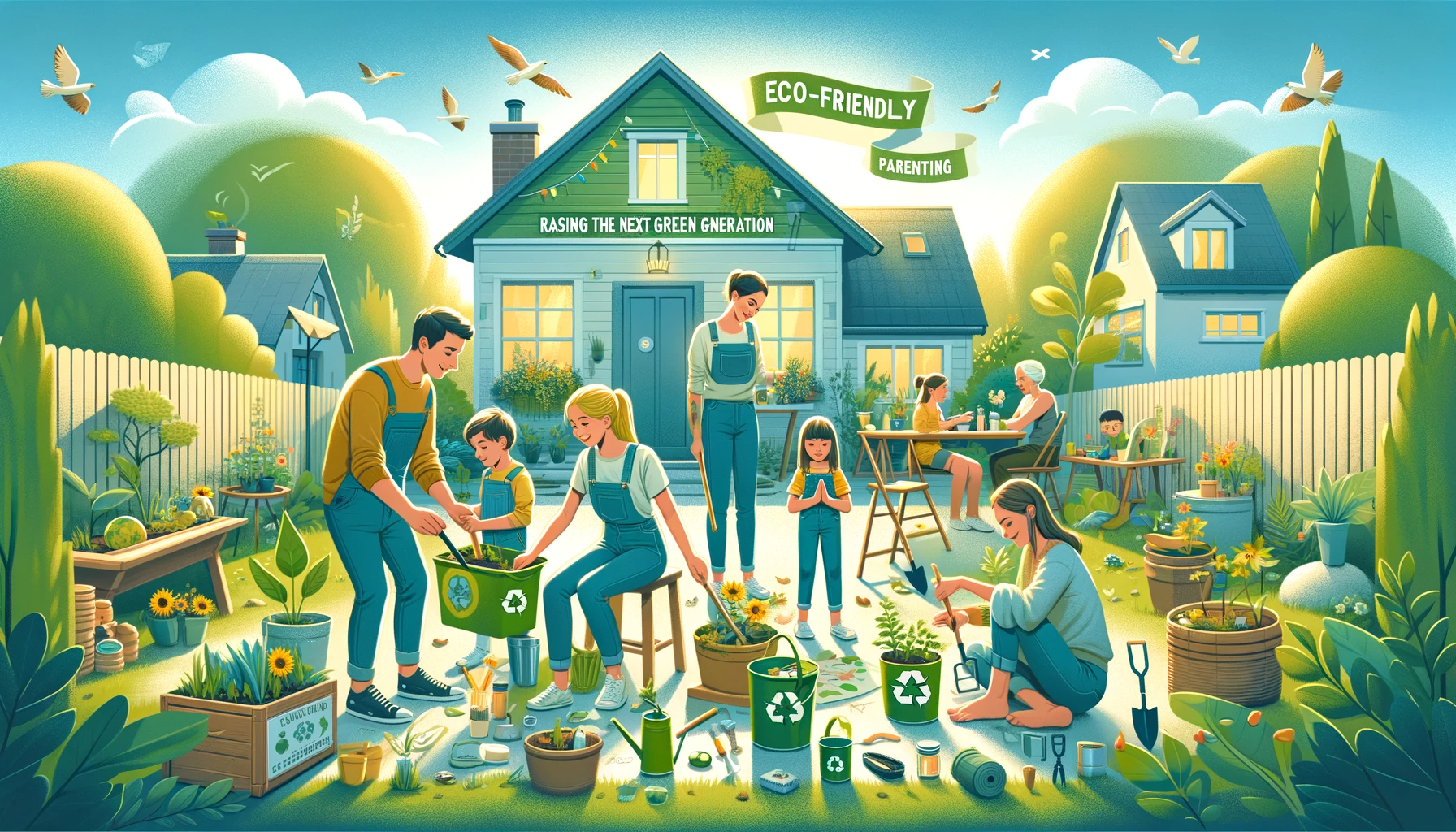The environmental challenges of today call for a future generation equipped with sustainability at its core. Eco-friendly parenting is the path to nurturing environmentally conscious individuals, ensuring a brighter and greener tomorrow.
1. Sustainable Baby Essentials
Choosing cloth diapers over disposables, or opting for sustainably sourced, organic baby clothing reduces waste and chemical exposure1.
2. Green Nutrition Choices
Prioritizing organic, local, and plant-based foods for children not only ensures better health but also supports sustainable farming practices2.
3. Eco-Friendly Toys and Learning Materials
Wooden toys, recycled craft materials, and books focusing on nature foster a love for the environment while reducing plastic consumption3.
4. Teaching Conservation
Instilling habits like turning off lights, using less water, and recycling helps children understand resource value4.
5. Outdoor Exploration
Regularly spending time in nature – be it parks, forests, or beaches – fosters a deep appreciation and understanding of the environment5.
6. Green Transportation Choices
Walking, cycling, or using public transport over driving can significantly reduce a family’s carbon footprint and teach kids about sustainable transportation6.
7. Reducing Consumption
Promoting a minimalist lifestyle, engaging in DIY projects, and supporting second-hand markets emphasizes the importance of reducing waste and reusing7.
8. Community Involvement
Participating in community clean-ups, tree planting, or local eco-initiatives offers practical lessons in environmental stewardship8.
Conclusion
Eco-friendly parenting is more than just a trend – it’s a long-term investment in the future. By raising children with a green mindset, we ensure that the next generation is not only aware of environmental issues but is also equipped to tackle them.
References:
- O’Brien, K., & Shea, K. (2010). The environmental impact of disposable versus re-useable nappies. Practising Midwife, 13(9), 32-34.
- Forman, J., & Silverstein, J. (2012). Organic foods: health and environmental advantages and disadvantages. Pediatrics, 130(5), e1406-e1415.
- Gasperi, F., Fabbri, D., & Mordenti, A. L. (2018). Green toys and learning: The case of wooden toys. Sustainable Production and Consumption, 16, 1-12.
- Otaki, Y., & Dodge, N. (2009). Learning about the environment and raising environmental consciousness through repeated fieldwork: A case study in primary school science in Japan. International Research in Geographical and Environmental Education, 18(1), 29-44.
- Kellert, S. R., Case, D. J., Escher, D., Witter, D. J., Mikels-Carrasco, J., & Seng, P. T. (2017). The nature of Americans: Disconnection and recommendation for reconnection. DJ Case & Associates.
- Sallis, J. F., Conway, T. L., Cain, K. L., & Carlson, J. A. (2018). Urban–rural differences in physical activity and sedentary behavior in California adolescents. Journal of Rural Health, 34(s1), s1-s12.
- Lewis, R. C., & Gregory, M. E. (2017). Are we being greenwashed? An investigation into organizational legitimacy, greenwashing, and consumer perceptions. Business and Society Review, 122(4), 499-528.
- Bartlett, S. (2005). Building better cities with children and youth. Environment & Urbanization, 17(2), 3-10.


